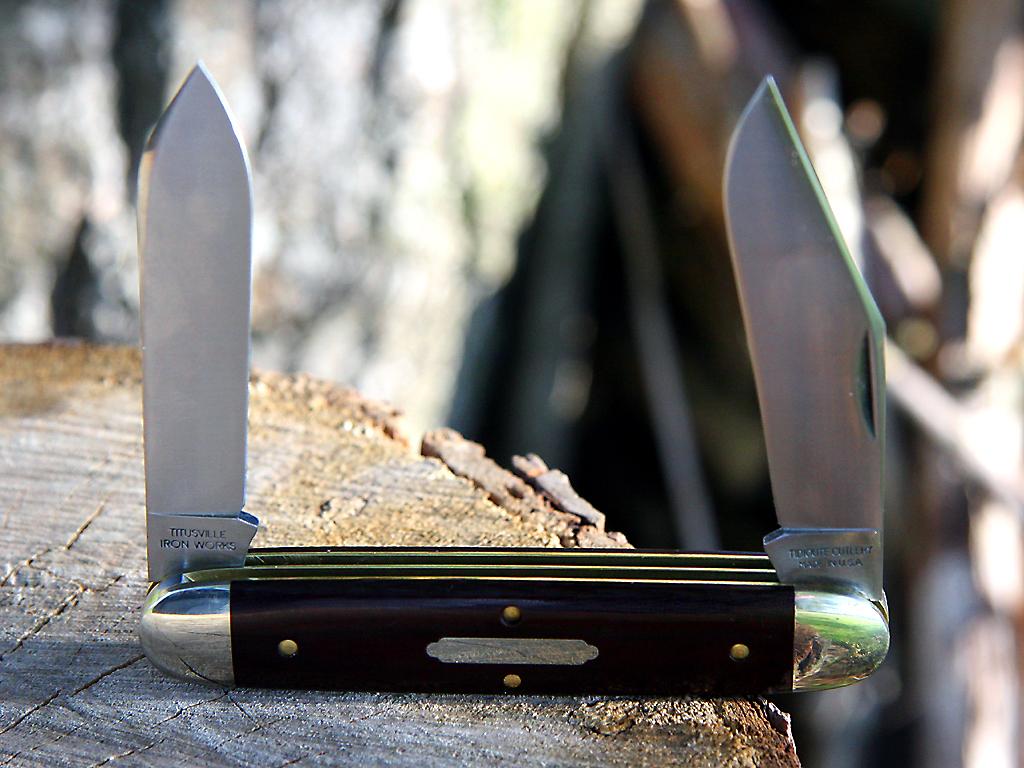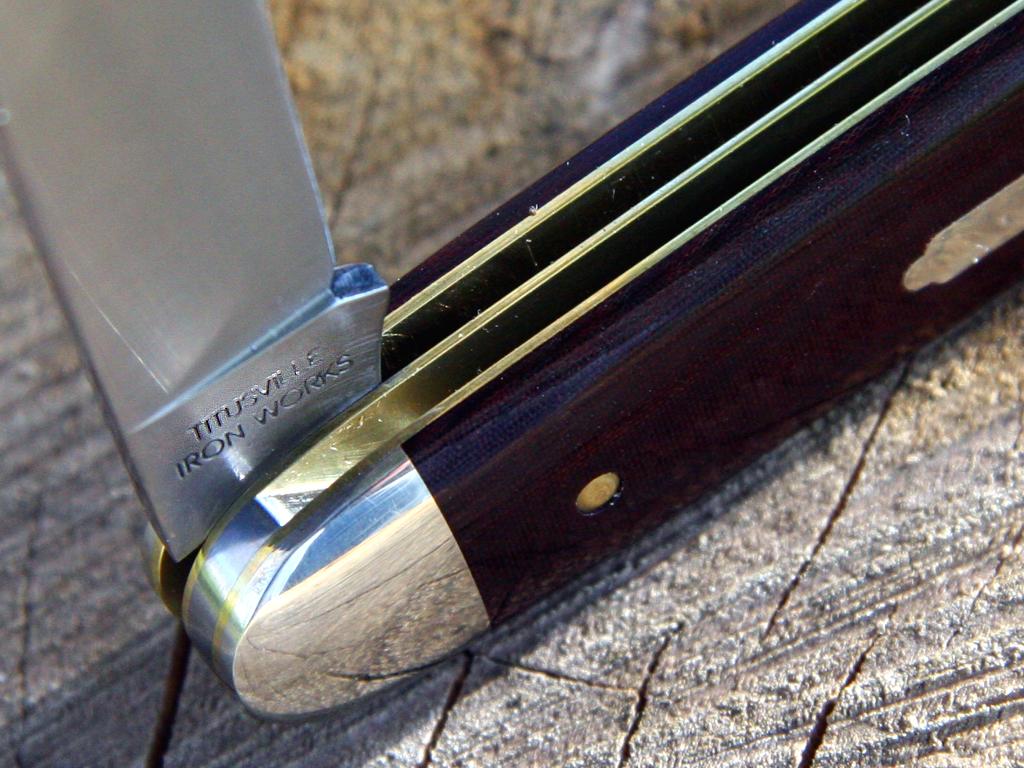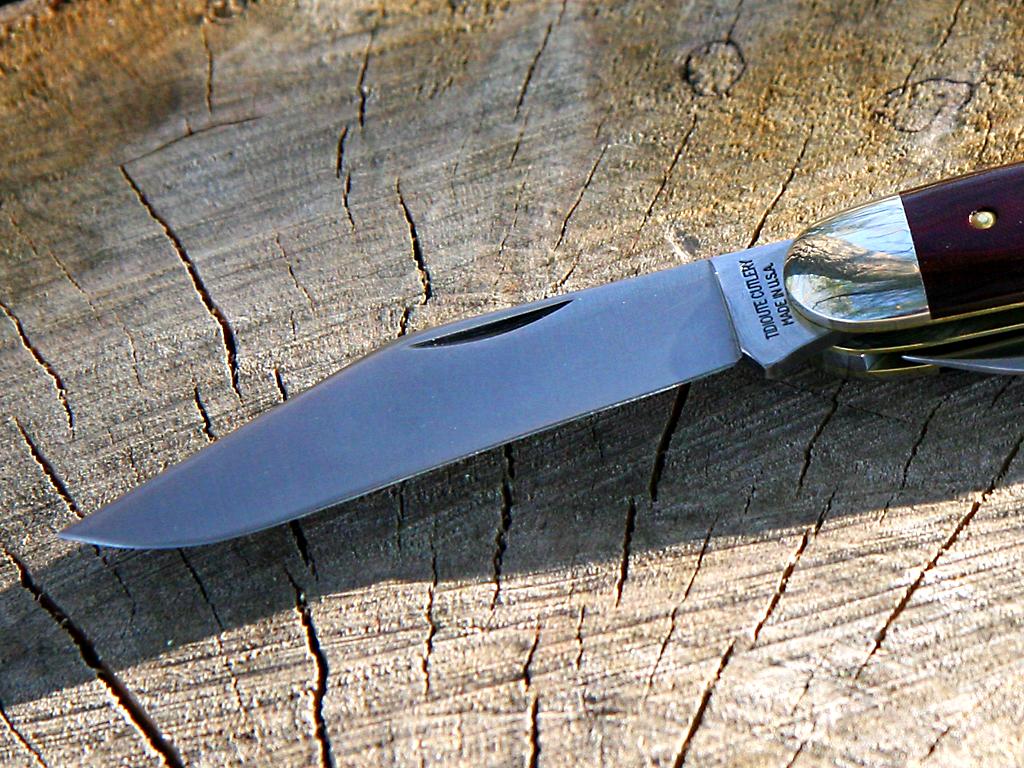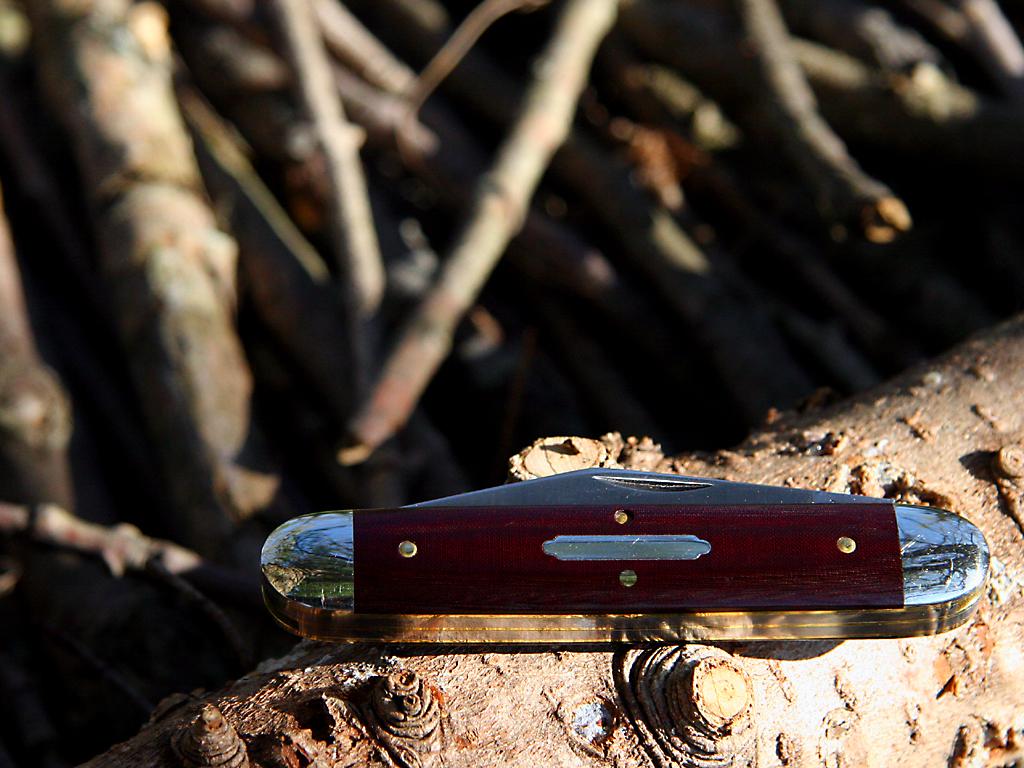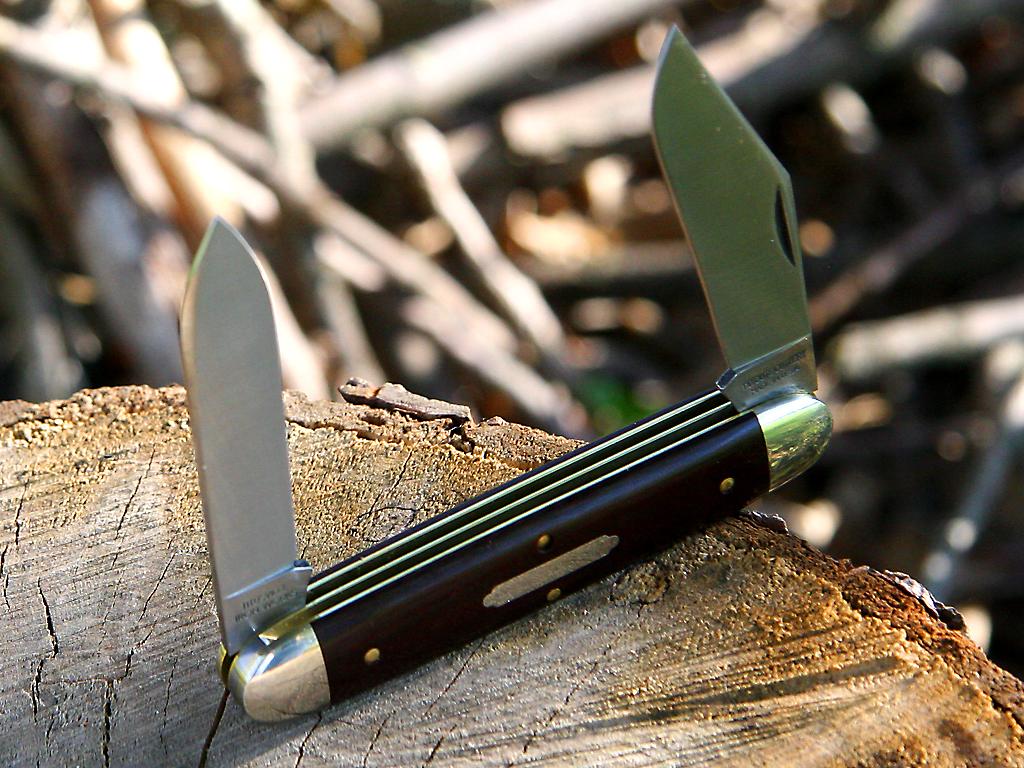Review: Great Eastern #54 Tidioute 'Big Moose'
2nd Sep 2015
(This article originally appeared on WoodsMonkey.com. Used with permission.)
by Tom Lindsay
There seems to be quite a demand for fixed-blade knives that mimic the one depicted by George Washington Sears (a.k.a. "Nessmuk") in his landmark book, Woodcraft. Even his double-bitted hatchet has drawn a fair bit of attention.
It's surprising, then, at least to us, that Nessmuk's simple folding knife appears to have gotten lost in the historical shuffle. Maybe that's because the old woodsman devoted scarcely half-a-sentence to it in Woodcraft:
"The strong double-bladed pocket knife is the best model I have yet found, and, in connection with the sheath knife, is all sufficient for camp use."
Though stingy with his words, Nessmuk did include an illustration. It shows a relatively large slipjoint, fitted with a clip blade on one end and a spear-point blade on the other. In pocketknife parlance, there's a name for that pattern.
It's called a "moose."
Saying that slipjoints have fallen completely out of favor with modern-day woodsmen might be a bit of a stretch, but there's no denying that they've been squeezed by single-blade folders and multi-tools. An initial push from the Buck 110 on one side and the Leatherman PST on the other, followed by countless descendants and imitators, has almost relegated the venerable pocketknife to "quaint" status -- in some folks' minds, anyway.
Respectfully, we differ.
Maybe that's because we grew up with pocketknives, learning to do all manner of things with only a small blade or two (or three). Call us old-fashioned, but we still believe that the classic slipjoint is an essential tool to have in the woods, always keeping in mind that it's best deployed as part of a "system" of tools (Nessmuk's "trio," for example).
So we're not yet ready to retire our love of pocketknives. Bring on the moose.
Surveying today's slipjoint marketplace, we found a number of knives that could fill Nessmuk's bill, from beefy trappers to slender muskrats. Ultimately we paid a visit to KnivesShipFree, a great source for Great Eastern Cutlery, and settled on the #54 pattern -- specifically, a Tidioute "Big Moose" (MSRP $160, KnivesShipFree $95).
We chose the #54 Big Moose because it's true to the iconic woodsman's intent, if not necessarily absolutely identical to the knife he used. Also, from the range of handle materials available we opted for maroon linen Micarta -- after all, this will be a bushcrafter's knife, a tool that'll be used hard and treated roughly, and Micarta is pretty much bulletproof.
Great Eastern's #54 is a substantial knife -- a real hand-filler, measuring four inches closed and weighing just shy of four ounces. Each of the 1095 carbon-steel blades (a conventional clip and a spear, like Nessmuk's) is three inches long, rides on its own (stiff) backspring and features a half-stop. The blades arrived in our hands with acceptably sharp working edges.
The pins and three full liners are brass; the bolsters and bar-style shield are nickel-silver. Fit and finish on this knife is old-school perfect -- everything walks, talks, shines and aligns just as it should. No play and no wiggles.
Aesthetically, the #54 Big Moose's simplicity and clean lines make it a very handsome knife. We found that it carried easily in a front pants pocket, despite its size and weight. It became even more comfortable when paired with a pocket slip.
In use, this Moose quickly proved its worth. Its clip blade excelled at fine carving, "backwoods surgery" and camp-kitchen duty, while we deployed the spear blade for general woodswork. In fact, although we always carry a medium-sized fixed-blade into the woods, for most tasks we left the larger knife sheathed on our belt and relied on the Big Moose.
The flat-ground blades performed exceptionally well for their size. They took a respectable edge and touched up easily with a couple of passes on a field strop. And although we never forgot that our Big Moose is still a slipjoint, its firm backsprings gave us a measure of confidence. We like that.
It'd be easy to make a case for the Great Eastern #54 Tidioute Big Moose as a "go-to" knife -- seriously, it's that versatile and capable. We're not suggesting that it could replace the other tools in a bushcraft set, not by a long shot, but we believe this knife will surprise a lot of people.
Come to think of it, the next time we head afield for a weekend maybe we'll take just the Big Moose, leaving our other tools behind, and explore its limits a little more. That could be fun.
We suspect the old woodsman would like it, too.
Sources
- KnivesShipFree http://www.knivesshipfree.com/
- Great Eastern Cutlery http://www.greateasterncutlery.com/

